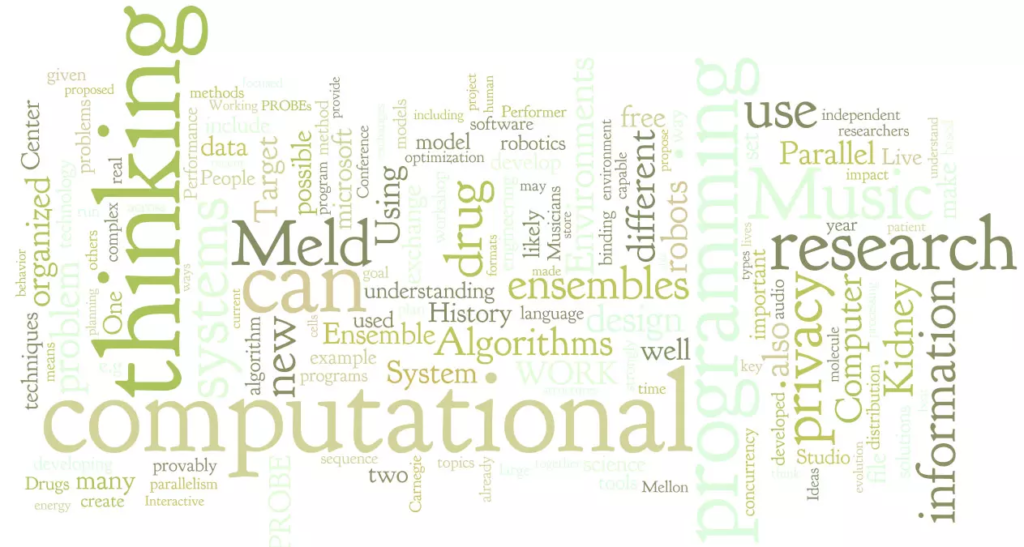The French startup ecosystem continues to create jobs, with 4% growth in the first half of 2024. While hiring remains strong (+17%), a rise in layoffs in June calls for
You might think that this is new, but it isn’t !
This new term, which comes from “Computational Thinking”, is increasingly coming to the fore as a relevant skill to look at.
Artificial Intelligence (AI) is having a revolutionary impact on scientific research and discovery.
In simple terms, we can see that to do research in any scientific or engineering discipline, it is necessary to be able to think in computational terms.
However, the impact of AI goes far beyond this. To thrive in today’s world, everyone needs to think about a problem differently. A logic adapted to computer science, quantum science or AI will be a plus in the relationship between man and machine.
Carnegie Mellon University, USA, launched the Center for Computational Thinking in 2012. Its aim is to advance research in this area to improve life, where AI and computing in general are involved.
To achieve this, the centre conducts research and organises seminars and symposia. These lead to concrete demonstrations of the value of computational thinking in various areas of everyday life.
Computational thinking is an approach to problem solving inspired by the way computers work.
The way they process information, computational thinking refers to the way we can break down problems into logical steps.
This enables us to analyse and solve them systematically and efficiently, just as a computer would.
In other words, computational thinking is a thought process involved in formulating problems and their solutions almost simultaneously.
Computational thinking is therefore a mental process used to understand and solve problems. By breaking things down into simpler steps, effective solutions can be developed.
This is done in such a way that the solutions are represented in a form that can be efficiently executed by an information processing service.
In this way, solutions to problems are represented in such a way that they can be efficiently implemented by an information processing system.
As would a computer or a human being using IT tools. The solutions are formulated in such a way as to be understandable and executable by computational means.
Short Definition : based on research by Jan Cuny, Larry Snider and Jeannette Wing (Source)
Computational thinking is the thought processes involved in formulating problems and their solutions so that the solutions are represented in a form that can be effectively carried out by an information-processing agent

The main achievement of the Centre for Computational Thinking is the PROBE,
PROBE, stands for PROBlem-oriented Exploration
A PROBE aims to develop and implement new computing concepts to dynamically illustrate the value of computational thinking.
It contributes to fundamental research in computer science.
For example, some PROBE projects involve applying innovative research concepts to unconventional problems.
They demonstrate how computational thinking can have a positive impact on society.
Other PROBE projects explore new educational methods for teaching computational thinking.
Very often, a PROBE project involves collaboration between an IT researcher and an expert in the field concerned.
A PROBE generally lasts for one year.
The company involved in the PROBE finances the teachers, students, post-doctoral fellows and other expenses.
At Microsoft, for example, a PROBE involves the collaboration of a researcher or a Microsoft Research representative.
The aim is to maximise their impact, and PROBE projects seek solutions that are generally applicable to the challenges in the field rather than specialised solutions or technologies intended for commercialisation.
Here there are examples of PROBEs
From a Computational Thinking point of view, the idea here is to push the Performer to offer a new model of musical performance.
It will include live acoustic instruments, pre-recorded music and computer-assisted music (CAM).
All will be combined to create performances.
IT is involved in the preparation of musical pieces, the detection of performance gestures and any feedback to the musicians.
It can also be used to add audio effects to sounds to make them more realistic when played through loudspeakers.
The performer must integrate a computer model of the entire musical creation process.
For example, the music in this project can be modelled as a sequence of musical parts or sections that are not necessarily played in the same order each time. Effect of the randomisation studied
Sections can be divided into bars and bars into time.
This granularity means that the project must consider the musical performance process from a computer point of view.
Specific methods will be developed to solve problems such as identifying tempo and BPM.
Triggering inputs, generating high-quality digital sound in synchronisation with the BPM and transmitting this signal to several loudspeakers.
Computational thinking and algorithmic principles are tools that can be applied in all disciplines.
Programming is no longer necessary, as writing and computational thinking skills will become indispensable in a world interconnected with AI.
It includes the ability to shape models in action.
Computational thinking involves compartmentalising problems, understanding algorithms, identifying Data Models, and managing abstraction and complexity.
It is crucial to solving challenges and creating relevant digital solutions in our modern society.
Definitions you need to know when practising computational thinking:
at GOWeeZ, we support companies in their innovation-related strategic development.
Would you like us to help you with a strategic innovation project, the development of AI-based architecture or fund-raising?
More articles:
Neurodiversity: an asset to be taken into account in your CSR and Human Resources strategy
Advisor in the art of the Pitch - Reveal your public speaking skills with GOWeeZ. and MY PITCH IS GOOD !
Computational thinking involves solving problems systematically and efficiently, breaking them down into logical steps and representing the solutions in such a way that they can be executed efficiently by information processing systems. It is becoming an increasingly sought-after skill.
Fabrice Clément Tweet
Goweez © 2025